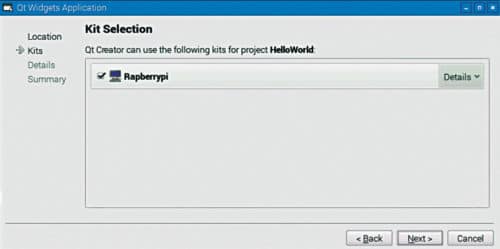

~/SSymlinker -s /usr/include/arm-linux-gnueabihf/sys -d /usr/include ~/SSymlinker -s /usr/include/arm-linux-gnueabihf/bits -d /usr/include ~/SSymlinker -s /usr/include/arm-linux-gnueabihf/gnu -d /usr/include ~/SSymlinker -s /usr/include/arm-linux-gnueabihf/asm -d /usr/include Then also create a directory for RaspberryQt:ĭownload symlinker tool and adjust symlinks.Sudo apt install -y libgstreamer1.0-dev libgstreamer-plugins-base1.0-dev Sudo apt install -y libgstreamer1.0-0 gstreamer1.0-plugins-base gstreamer1.0-plugins-good gstreamer1.0-plugins-bad gstreamer1.0-plugins-ugly gstreamer1.0-libav gstreamer1.0-tools gstreamer1.0-x gstreamer1.0-alsa gstreamer1.0-gl gstreamer1.0-gtk3 gstreamer1.0-pulseaudio Sudo apt install -y libopenal-data libsndio7.0 libopenal1 libopenal-dev pulseaudio Sudo apt install -y libxvidcore-dev libx264-dev openjdk-8-jre-headless Sudo apt install -y libavcodec-dev libavformat-dev libswscale-dev libv4l-dev Sudo apt install -y libjpeg-dev libpng-dev libtiff-dev Install additional packages (depending on your needs):.Sudo apt-get install -y libxcb-randr0-dev libxcb-xtest0-dev libxcb-shape0-dev libxcb-xkb-dev Sudo apt-get build-dep -y qt5-qmake libqt5gui5 libqt5webengine-data libqt5webkit5 libudev-dev libinput-dev libts-dev libxcb-xinerama0-dev libxcb-xinerama0 gdbserver Sudo apt-get install -y build-essential cmake unzip pkg-config gfortran

And then install the required Qt and development packages:.Then update the system with the following commands:Įcho "$USER ALL=NOPASSWD:$(which rsync)" | sudo tee -append /etc/sudoers.Sudo sed -i -e 's/\#deb-src/deb-src/g' /etc/apt/sources.list Add development sources in /etc/apt/sources.list with the following command:.For our configuration, we need "SSH" activated. Īfter switching on the Pi 4, the configuration menu appears, where you can make various settings (e.g., host name, IP address, user, etc.).
#Raspberry pi qt full screen problems how to
I used "".ĭownloads and instructions on how to create an SD card with this can be found at. For the basic installation, we need a Raspberry Pi OS Lite operating system on the Pi 4.


 0 kommentar(er)
0 kommentar(er)
